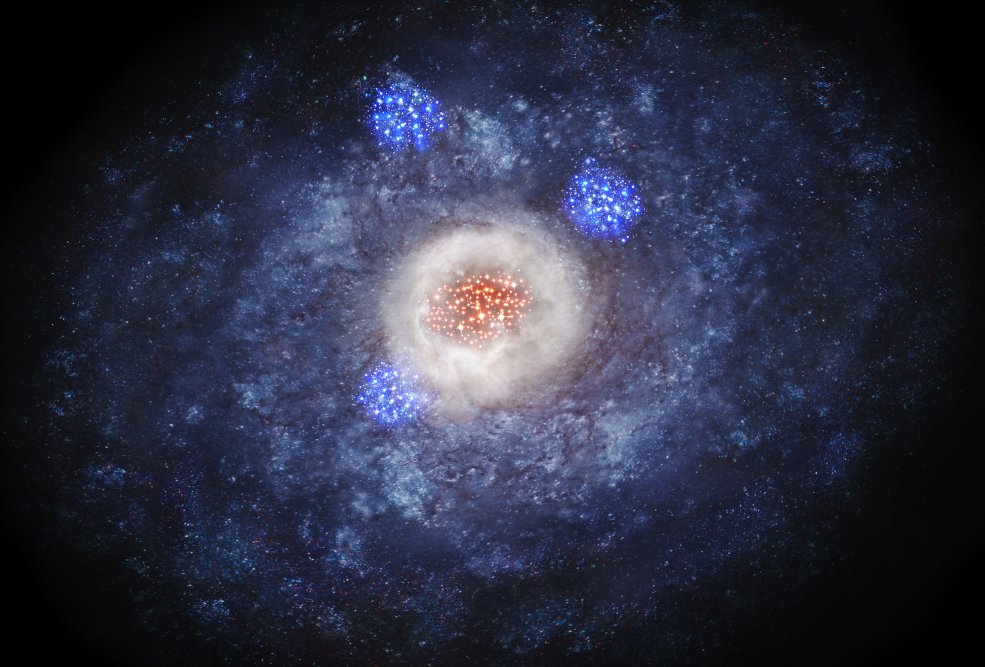MessageToEagle.com – Active star formation upswells galaxies, like yeast helps bread rise, say astronomers.
Using three powerful telescopes on the ground and in orbit, they observed galaxies from 11 billion years ago, 3 billion years after the Big Bang and found explosive formation of stars in the cores of galaxies. Their observations suggest that that galaxies can change their own shape without interaction with other galaxies.

“Massive elliptical galaxies are believed to be formed from collisions of disk galaxies,” said Ken-ichi Tadaki, the lead author of two research papers and a postdoctoral researcher at the National Astronomical Observatory of Japan (NAOJ).
See also:
Formations Of Stars In Cores Of Galaxies From 3 Billion Years After The Big Bang
Milky Way’s Galaxies Are Not What They Seem – We Are All Extragalactic Immigrants – Study Shows
Milky Way And Its Neighboring Galaxies Reside In A Gigantic Celestial Void
“But, it is uncertain whether all the elliptical galaxies have experienced galaxy collision. There may be an alternative path.”
Receiving faint light which has traveled 11 billion years is tough work for astronomers, who harnessed the power of three telescopes to anatomize the ancient galaxies.
Using NAOJ’s 8.2-m Subaru Telescope in Hawai`the team picked out 25 galaxies in this epoch. Then they targeted the galaxies for observations with NASA/ESA’s Hubble Space Telescope (HST) and the ALMA (Atacama Large Millimeter/submillimeter Array).
Astronomers say that the star formation activity is so high that huge numbers of stars will be formed at the centers of the galaxies and astronomers think that ultimately the galaxies will be dominated by the stellar bulge and become elliptical or lenticular galaxies.
“Here, we obtained firm evidence that dense galactic cores can be formed without galaxy collisions. They can also be formed by intense star formation in the heart of the galaxy.” said Tadaki.
The team used the European Southern Observatory’s Very Large Telescope to observe the target galaxies and confirmed that there are no indications of massive galaxy collisions.
MesageToEagle.com
Expand for references





